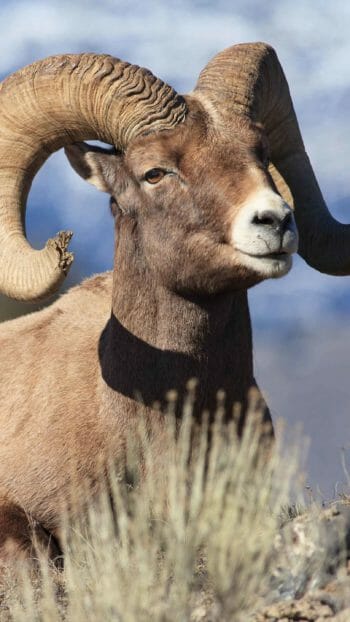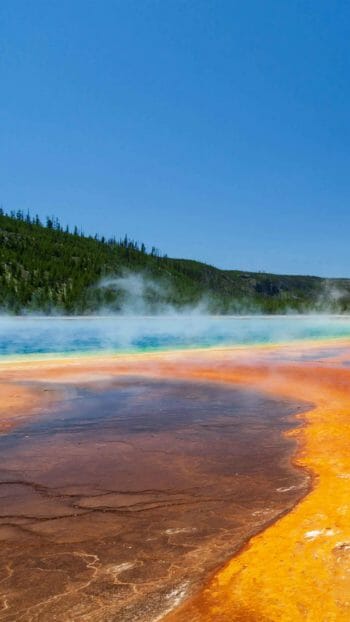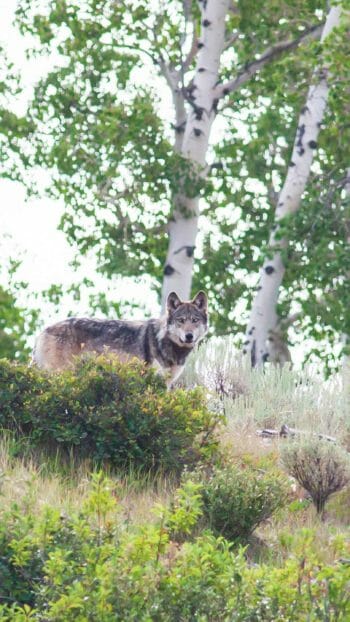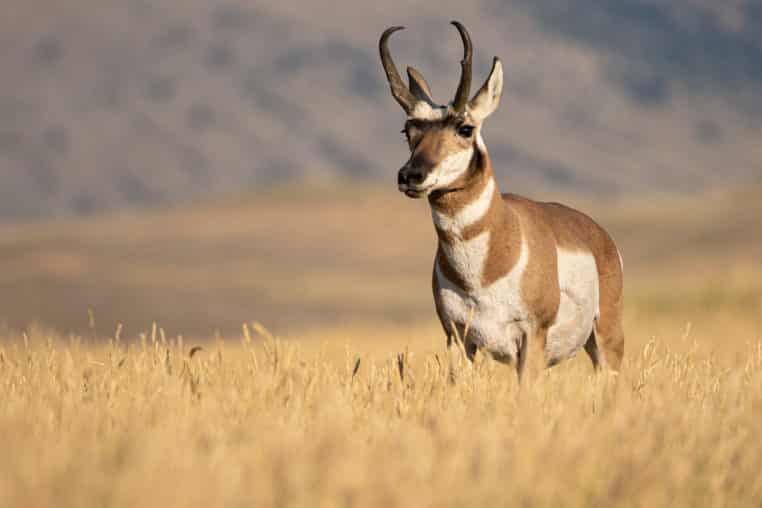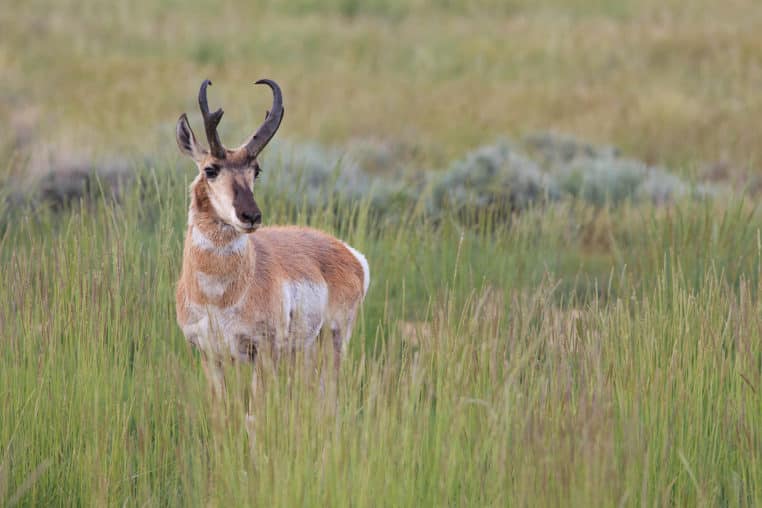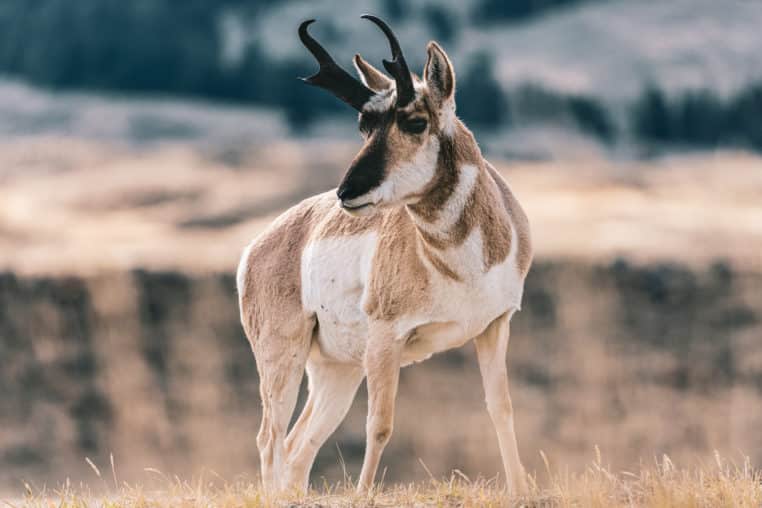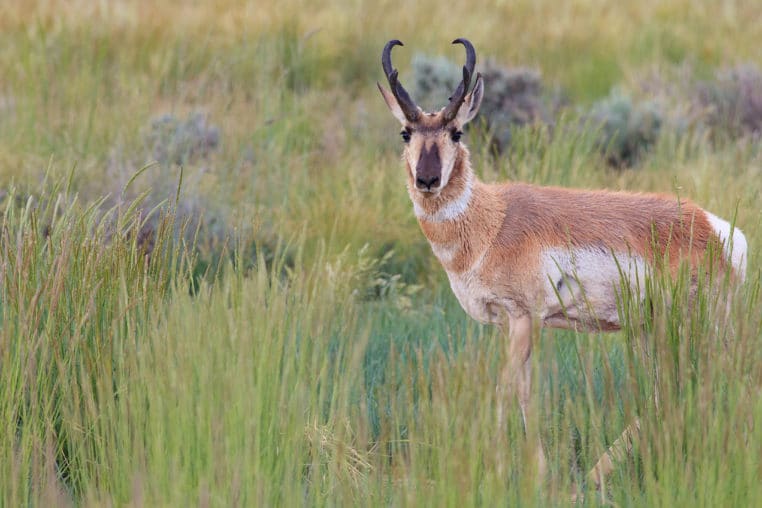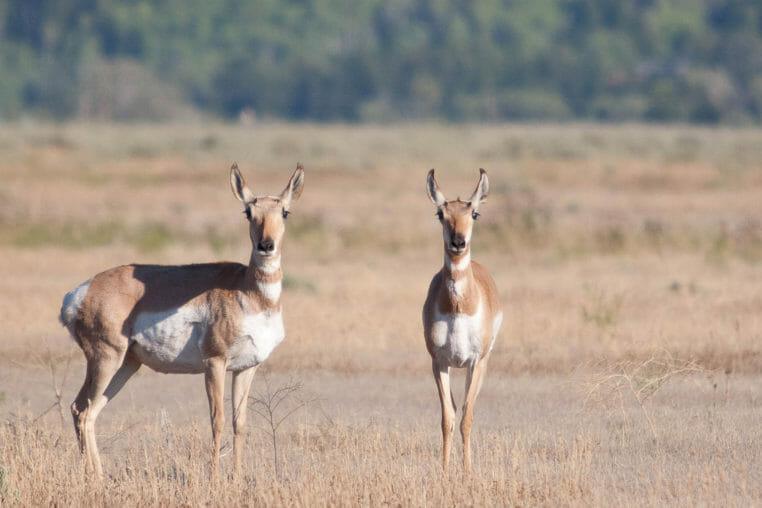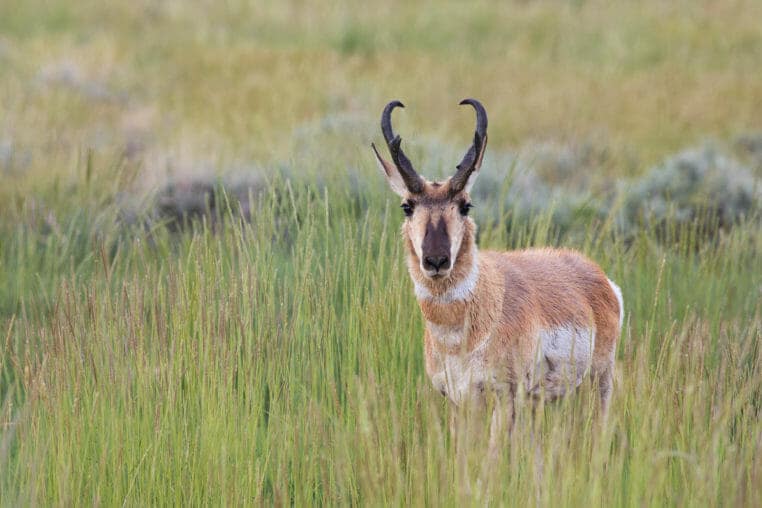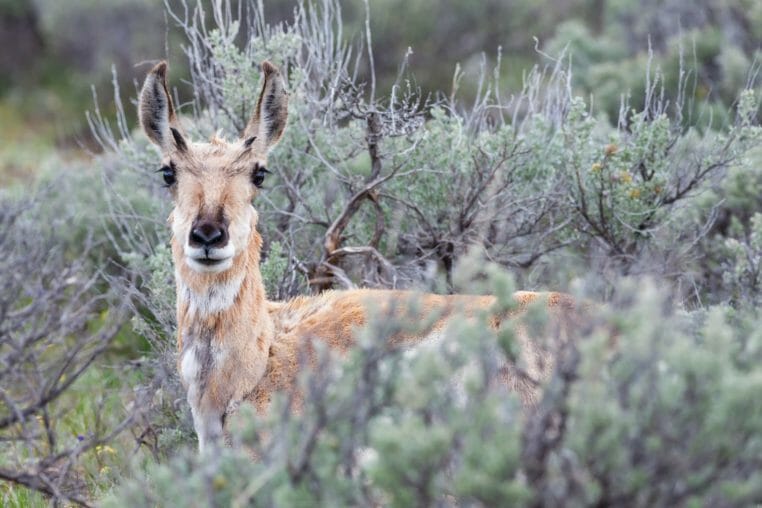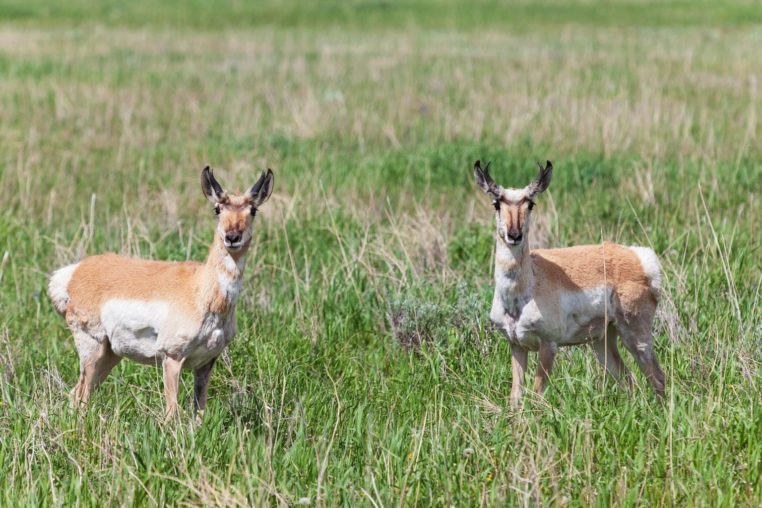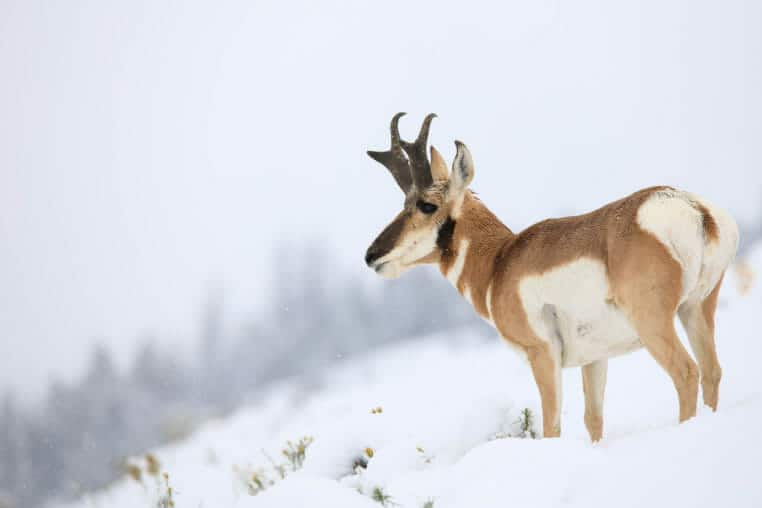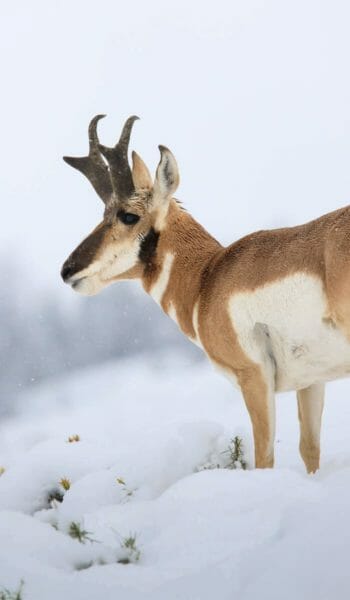
Antilocapra americana
Pronghorn are among the most fascinating and unique animals in North America. Often referred to as “antelope,” they are in fact not true antelope at all, but a distinct species found only in the Western Hemisphere. Their resemblance to African antelope is purely coincidental, the result of convergent evolution rather than shared ancestry. Pronghorn are considered a living link to the Pleistocene era, having survived while many of their contemporaries, like the North American cheetah, disappeared thousands of years ago. Today, they stand as icons of the American West, thriving in the vast open landscapes of sagebrush plains and grasslands that define much of the Greater Yellowstone Ecosystem.
Wildlife Viewing
- Yellowstone
Book Online
Watch For Wildlife On These Tours
About
Speed and Adaptations
Pronghorn are celebrated as the fastest land mammals in the Western Hemisphere, capable of reaching speeds of up to 60 miles per hour. While they rarely need to run at full tilt today, their speed is thought to have evolved as an adaptation to outrun predators long extinct, including the North American cheetah. Beyond sheer speed, pronghorn are built for endurance, able to sustain high speeds over long distances. Their extraordinary eyesight, roughly equivalent to looking through 8x binoculars, gives them an incredible advantage in spotting threats across wide, open landscapes. Unlike deer, they avoid dense forests where their speed and eyesight would be less effective, choosing instead the openness of grasslands and sagebrush where they are safest.
Diet and Migration
Pronghorn are highly specialized feeders. They consume tough, fibrous plants such as sagebrush that few other animals can digest. Their unique digestive system allows them to access nutrients from these hardy plants, giving them an advantage in arid, open habitats. Seasonal migration is another key adaptation. In the Greater Yellowstone Ecosystem, pronghorn migrate south during the harsh winter months to avoid deep snow and limited forage, then return north in late spring and summer to graze on fresh growth. These migrations are some of the longest of any land mammal in North America and highlight the importance of open corridors and intact habitat for their survival.
Reproduction
The life cycle of pronghorn is equally remarkable. During the fall rut, bucks compete fiercely for dominance, establishing territories and gathering harems of females. The bucks display by posturing, chasing rivals, and defending their chosen group of does. In the spring, females typically give birth to twins, though single births are not uncommon. Newborn pronghorn fawns are especially vulnerable, relying on camouflage and stillness to avoid predators. Remarkably, within just four days of birth, a pronghorn fawn can already outrun a human, and within a week, it can outrun most natural predators. This rapid development is essential for survival in open country where hiding places are few.
Conservation and Challenges
While pronghorn remain relatively abundant compared to some other species, they face significant challenges tied to modern landscapes. Their survival depends heavily on access to open migration corridors, as they travel some of the longest distances of any land mammal in North America. Unfortunately, development, roads, and fencing often fragment these routes, creating barriers that restrict movement and isolate herds.
Traditional livestock fencing is one of the biggest obstacles for pronghorn, as they do not typically jump over fences like deer. Instead, they crawl under them, which can lead to injuries or prevent access to seasonal ranges altogether. Efforts to replace traditional fencing with wildlife-friendly fencing—raised bottom wires that allow safe passage—are helping to restore connectivity across parts of Wyoming and Montana.
Pronghorn also face threats from harsh winters, vehicle collisions, and habitat loss from human expansion. Conservation groups and state agencies are actively working to preserve migration corridors, and Yellowstone and Grand Teton provide strongholds of protected habitat where herds continue to thrive. By maintaining these open landscapes and raising awareness of their unique needs, pronghorn remain a living symbol of the wild and open West.
Best Times to See Pronghorn
Pronghorn are diurnal, meaning they are active during daylight hours, which makes them relatively easy to observe compared to nocturnal species. The best time to view pronghorn in Yellowstone and Grand Teton is during the summer months, when herds spread across the open sage flats of the parks. Their striking white rumps and tan coats stand out against the landscape, and their tendency to gather in groups makes them easier to spot from a distance. In fall, the rut offers unique opportunities to observe bucks displaying and chasing rivals, while spring and early summer may reward patient observers with sightings of young fawns staying close to their mothers.
FAQs
Why are pronghorn often called antelope?
Pronghorn are sometimes called “pronghorn antelope” because they resemble African antelope, but they are not true antelope. They are a completely unique species found only in North America, with no close relatives anywhere else in the world.
How fast can pronghorn run?
Pronghorn are the fastest land mammals in the Western Hemisphere, capable of reaching speeds of up to 60 miles per hour. They can also sustain high speeds over long distances, an adaptation believed to have evolved alongside now-extinct predators such as the North American cheetah.
What do pronghorn eat?
Pronghorn have a specialized diet that includes sagebrush, grasses, and other tough plants that few other animals consume. Their unique digestive system allows them to process these fibrous foods, giving them an advantage in open, arid habitats.
Do pronghorn migrate?
Yes. Pronghorn in the Greater Yellowstone Ecosystem are known for making some of the longest land migrations in North America. They move south in winter to avoid deep snow and limited forage, then return north in late spring and summer to graze on fresh growth.
Where is the best place to see pronghorn in Yellowstone and Grand Teton?
Pronghorn are best spotted in summer, when herds spread across open sage flats in Yellowstone and Grand Teton National Parks. Their tan coats and distinctive white rumps stand out against the landscape, making them easier to see in daylight hours.
Further Reading
Lamar Valley Yellowstone: A Wildlife Watcher’s Paradise
Aug 12, 2025
Tucked into the northeastern corner of Yellowstone National Park lies one of the most wildlife-rich landscapes in North America—Lamar Valley. Often called “America’s Serengeti”, this expansive valley is celebrated for its sweeping views, abundant animal sightings, and exceptional opportunities for nature photography…
Animals of Yellowstone: A Seasonal Wildlife Guide
May 21, 202
From mighty grizzlies to elusive wolves and thundering herds of bison, Yellowstone National Park is a living, breathing showcase of North America’s most iconic wildlife where every season offers a different kind of magic.
Whether you’re planning a summer getaway or a winter escape, this guide reveals what animals you may encounter on your adventures…

